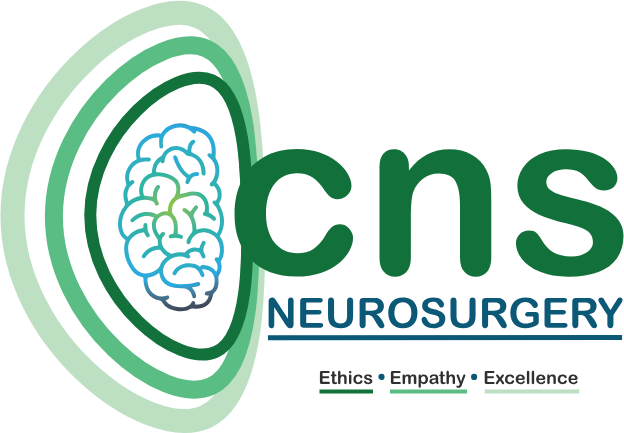
Advanced Neuro-Onco Surgery
Advanced Brain / Spine Tumor Surgery
Dr. Chirag Solanki has been trained in this field in his alma mater, NIMHANS, the premiere world-renowned Institute of National Importance in India under the stalwarts. He also got training under Professor Tipu Aziz, the pioneer in this field in Europe and one of the first few in the world, for Deep Brain Stimulation (DBS) from John Radcliffe Hospital, Oxford, UK. There he also trained for DBS, Spinal cord stimulation and peripheral nerve stimulation under Dr. Alex Green, Dr. James Fitzgerald and Dr. Stana Bojanic. He returned from Oxford, UK to provide his expertise to the patients in this field and establish the first ever center in Gujarat.
FAQ’s
What is Neuro-onco surgery?
Neuro-onco surgery is a specialized field of neurosurgery that focuses on the treatment of brain and spinal cord tumours. These surgeries involve the removal of tumours from the brain or spinal cord to improve symptoms and prevent further damage.
What are the most common types of brain tumours treated with Neuro-onco surgery?
The most common types of brain tumours treated with Neuro-onco surgery include gliomas, meningiomas, pituitary tumours, and metastatic brain tumours.
What are the different types of Neuro-onco surgeries?
There are several types of Neuro-onco surgeries, including biopsy, craniotomy, and endoscopic surgery. Biopsy involves the removal of a small piece of the tumour for examination. Craniotomy involves removing a portion of the skull to access the brain and remove the tumour. Endoscopic surgery involves the use of a tiny camera and instruments inserted through a small incision to remove the tumour.
What is the goal of Neuro-onco surgery?
The goal of Neuro-onco surgery is to remove as much of the tumour as possible while preserving the surrounding healthy brain tissue. This can improve symptoms and prevent further damage to the brain or spinal cord.
What are the risks associated with Neuro-onco surgery?
Neuro-onco surgery is a complex surgery that carries some risks, including bleeding, infection, damage to surrounding brain tissue, and neurological deficits.
What is the recovery process like after Neuro-onco surgery?
The recovery process after Neuro-onco surgery can vary depending on the type and extent of the surgery. Patients may experience some pain, swelling, and discomfort, and may need to take medications to manage these symptoms. They may also need to undergo rehabilitation to improve their strength and mobility.
What other treatments are available for brain tumours besides Neuro-onco surgery?
Other treatments for brain tumours include radiation therapy, chemotherapy, and targeted therapy. These treatments may be used alone or in combination with Neuro-onco surgery to improve outcomes.
What is the prognosis for patients undergoing Neuro-onco surgery?
The prognosis for patients undergoing Neuro-onco surgery depends on several factors, including the type and stage of the tumour, the extent of the surgery, and the patient’s overall health. With early detection and appropriate treatment, some patients may achieve a good prognosis.
What are some recent advances in brain tumor surgery?
There have been several recent advances in brain tumor surgery, including the use of advanced imaging techniques, minimally invasive surgery, and the development of new surgical tools and technologies.
What are some of the advanced imaging techniques used in brain tumor surgery?
Advanced imaging techniques used in brain tumor surgery include magnetic resonance imaging (MRI), functional MRI (fMRI), diffusion tensor imaging (DTI), and positron emission tomography (PET). These imaging techniques help neurosurgeons visualize the tumor and surrounding brain tissue, which can help guide the surgical approach.
What is minimally invasive brain tumor surgery?
Minimally invasive brain tumor surgery is a type of surgery that uses smaller incisions and specialized instruments to remove the tumor. This approach can lead to faster recovery times and fewer complications compared to traditional open surgery.
What are some of the new surgical tools and technologies used in brain tumor surgery?
New surgical tools and technologies used in brain tumor surgery include computer-assisted navigation systems, laser ablation, and intraoperative MRI. These tools and technologies can help neurosurgeons more accurately locate and remove the tumor while minimizing damage to surrounding brain tissue.
What is laser ablation?
Laser ablation is a minimally invasive technique that uses a laser to destroy the tumor. A small incision is made in the skull, and a thin fiber-optic probe is inserted into the brain. The laser heats and destroys the tumor, which is then removed through the same incision.
What is computer-assisted navigation?
Computer-assisted navigation is a technology that uses specialized software and imaging techniques to create a 3D map of the brain. This map helps neurosurgeons navigate to the tumor more precisely and avoid damaging important areas of the brain.
Book Appointment
We are here for you
We are here to make your brain, and spine healthy and normal like others.

